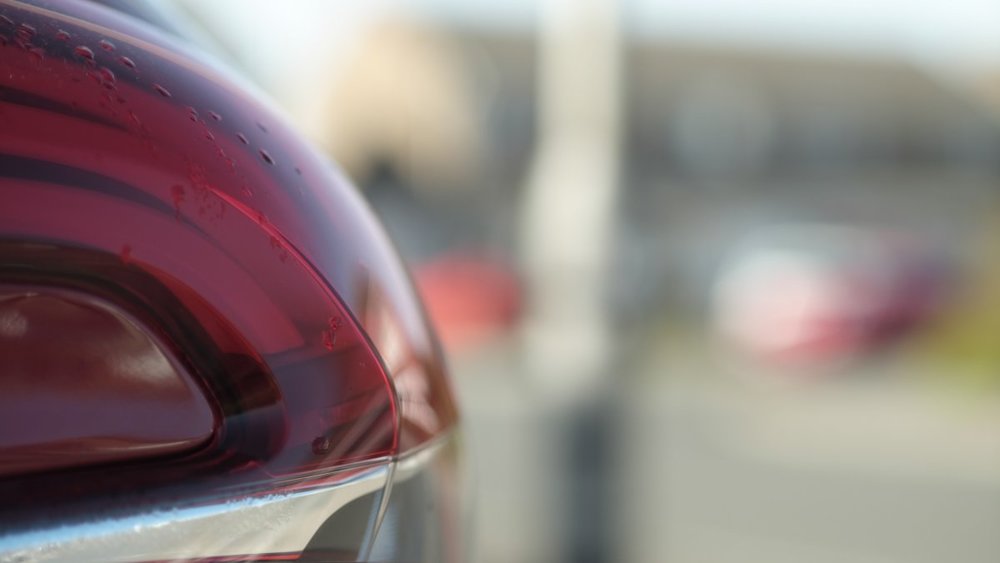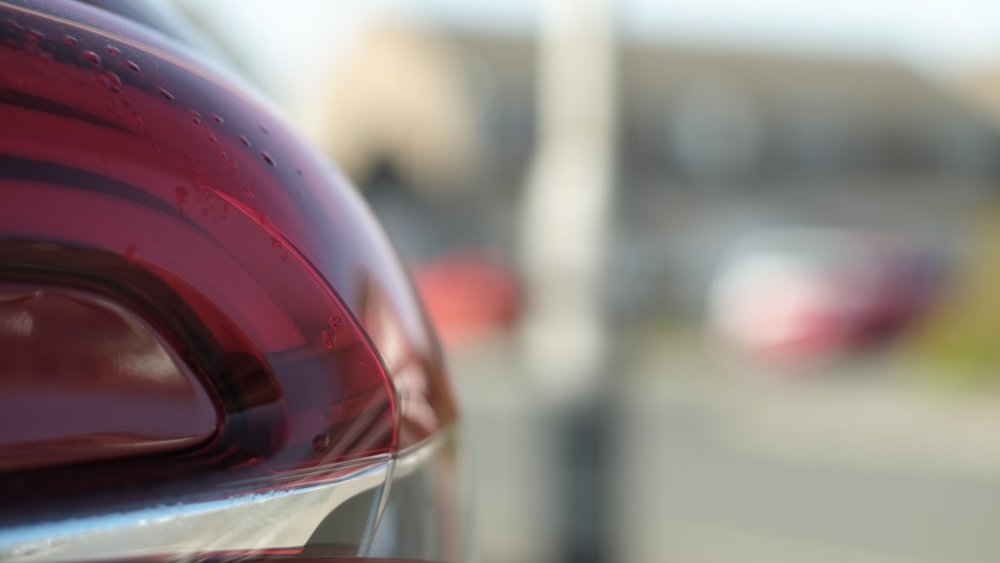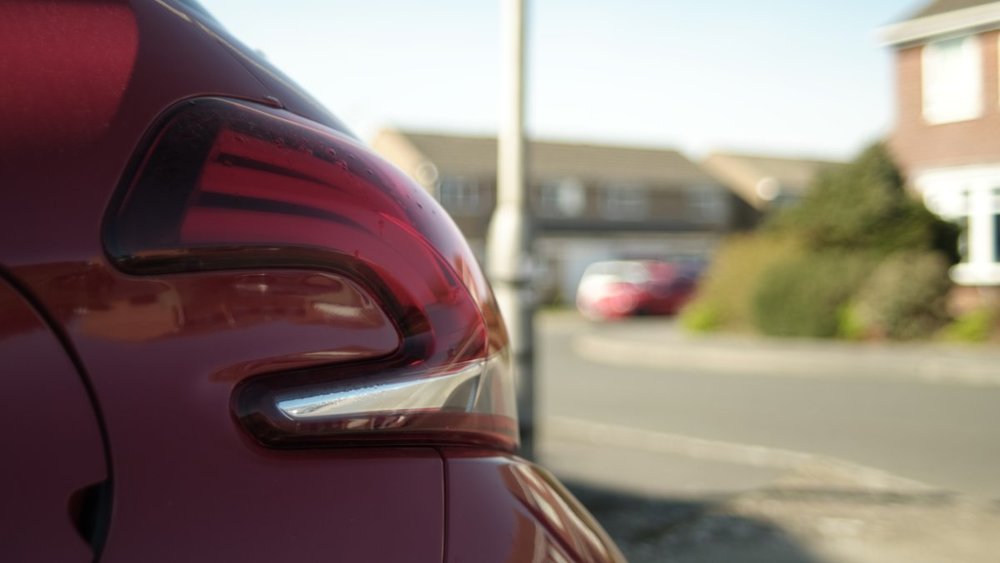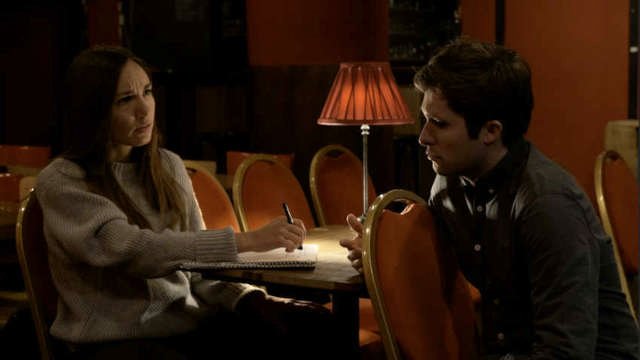
Stuart Brereton
-
Posts
3,955 -
Joined
-
Last visited
Posts posted by Stuart Brereton
-
-
On 4/7/2024 at 2:36 AM, Phil Rhodes said:
Thanks - though I don't know what the standard is...
Dana Dolly track has 12"/300mm centers. I wouldn't call it a miniature slider though
-
I've just finished a long show in Saudi Arabia, which was set in biblical times. Consequently, we lit a lot with fire at night. The SFX department had a variety of fire gags, all fed from propane gas tanks, which made them very controllable. The issue as a DP is being able to expose for people's faces, while also trying to keep some color and saturation in the flames themselves. Shooting wide open on a fast lens at 800 asa means that the flames will just show as white, so you have to build in your own sources, so that you can have faces exposed at a decent level. I was exposing at around f2.8 - f4 at 800 asa, with faces underexposed by 1.5 stops. That was enough to hold the warm yellow of the flames.
Although occasionally I used nothing but firelight to light with, most of the time we were using additional sources to key the actors with. Initially, I was using 2' & 4' Astera tubes to mimic fire effects, and we were also using Aputure BC7 globes inside of the lanterns the actors were holding. I was never happy with the Asteras, and eventually we switched to using little Aputure MC4 LED bricks set to their fire effect. For longer throws, and larger areas we used Skypanel S30s on beaverboards.
Real fire is around 2200K, but we never went that low with our lamps. When you head that far into the red end of the spectrum, the color becomes basically monochromatic, and when combined with underexposure, it can get very muddy and indistinct. I generally ran all our lamps at 2800K which was enough to give a warm glow to skin tones and to create a little color contrast with the colder moonlight tones we were creating.
-
 2
2
-
-
10 hours ago, Joshua Silverlock said:
If you are using a handheld camera and your filming will not cause an obstruction then there is no restriction to filming on London’s public highway. In some boroughs this also extends to small crews with a tripod. No licence or any form of official permission is required."
That exemption exists to allow News crews to do their job without having to have multiple permits. That why it mentions handheld cameras. It also prevents tourists with handycams from technically breaking the law.
A shoot with multiple crew members, and camera and lighting equipment blocking sidewalks is still going to attract attention from the police.
it also specifically mentions not causing obstructions. What is locking up a road, if not causing an obstruction?
Of course, safety is a separate issue from permits, and I’m glad that you seem to understand the issues, even if some people are determined to give you poor advice.
-
26 minutes ago, Tyler Purcell said:
You do know it's legal to shoot on the sidewalks in the United States right? It's also legal to shoot FROM them into the street. No permit, no insurance nothing required. So the only "complication" here, is a camera operator crossing an empty street in the middle of the night with a camera wearing a reflective vest, with PA's surrounding them with flashlights to insure cars can see them.
This shoot is in LONDON.
Shooting in London without a permit is ILLEGAL
Shooting in the street without a proper lock up is DANGEROUS.
Locking up a street without a permit is DANGEROUS AND ILLEGAL
Stop advising people to risk their safety and break the law. It is highly irresponsible. As usual, you're so desperate to be right that you won't listen to any of the numerous people who have told you why this is a bad idea.
-
 1
1
-
-
1 hour ago, Matthew J. Walker said:
You also have to consider what lens is to be used. It is well known that modern glass is obviously very consistent as it's machine made whereas older lenses are handmade
Older lenses were handmade, yes, but handmade to extremely high tolerances. Depth of Field does not vary just because it’s an old lens.
-
2 hours ago, Tyler Purcell said:
Welcome to low budget filmmaking.
What an asinine comment.
That is exactly the kind of thinking that gets people hurt. There is no shot that is worth risking injury or death to get. It was that attitude that got Sarah Jones killed, and expressing it here, under the guise of offering help, is highly irresponsible and offensive. I sincerely hope you are not passing on such ridiculous advice to those poor unfortunates you have as “students”.
-
 3
3
-
 1
1
-
-
3 hours ago, Tyler Purcell said:
I'm simply regurgitating what I've seen done
That sounds like an attempt to avoid responsibility for giving bad advice.
The OP clearly stated that they intended to be working on multiple streets in the same shot, at night, in London. I don't know if you've ever visited, but it's not some sleepy little town with "one or two cars every minute". What you are suggesting is dangerous and illegal.
-
 3
3
-
 1
1
-
-
Both sets of lenses are very capable and very sharp. Leica R are extremely popular as rehoused sets, Contax Zeiss less so, but that may be because Zeiss Superspeeds offer an affordable alternative. The issues that you'll find are common to just about all cine-modded lenses: the lack of a uniform maximum aperture, and a short focus throw. If you're shooting at f2.8 or above, the aperture won't be a problem, and using a remote focus unit where the focus scale can be mapped over the full 360º of the wheel will mitigate the shortness of the throw.
You say that Lomos would be your first choice. To me, that says you're looking for slightly softer, lower contrast lenses, so you may want to look at older, single coated glass like Nikon Autos or Super Takumars, if you can find a set in LA. Canon FL, or older FD would be another good alternative, but you'd need to find a set that had had the mounts converted to EF. There's also a plethora of old Russian glass that's available in M42 mount. You won't be able to find a matched set of anything, but there some great lenses out there. Even the Helios 44-2 is capable of much more than just 'swirly bokeh'.
As an aside, it's probably helpful to stop thinking about "Crop Factors". A 50mm lens is a 50mm lens. It doesn't change. It's much simpler just to learn what each focal length looks like on s35, rather than have to do math every time you swing a lens.
EDIT: Old Fast Glass in Sun Valley have cine-modded sets of Canon FD and Nikon Ai. Lovely lenses dating back to the mid '70s - early '80s
-
 1
1
-
-
2 hours ago, Satsuki Murashige said:
I think what Stuart was pointing out is that if you attempt to keep the plane of focus in the same place for each image, compensating for the difference in close focus with the focus ring of the lens, then the images are the same.
That's exactly my point ? The diopter is not being used to compensate for a lack of close focus ability in the lens. That's why I asked Peter where the lens was focused after the diopter was added.
I tend to agree with Daniel that this is most likely something of a magic trick designed to wow the people at video village. Either that, or just one of those weird myths that gets passed around without ever being properly tested. I've actually heard someone fairly high up in sales at Zeiss telling people this "trick" as well.
-
9 hours ago, Tyler Purcell said:
Shooting a gray card on film is a lesson in futility, because reality is, the only way to make it work is if it's the first frame the tech see's. That's honestly pretty impossible unless you run the camera at the head of the roll for quite a long time with just the card in frame. I don't know about you, but when we change mags, we're back shooting again in seconds, not minutes. The camera team doesn't have time to schlep across the set, hold a card in front of the actors face and shoot 10 seconds of film, then walk back again and continue our shoot.
You shoot gray scales at the beginning of each scene. You don't need to do it after reloading unless it's also a new scene. It’s been done without problems for decades.
9 hours ago, Tyler Purcell said:Sets these days are fast bro
Thanks for the heads up, I had no idea.
9 hours ago, Tyler Purcell said:I've prepped on 100's of shows thanks to being one of the top film camera rental places in LA
I'm sure Panavision are terrified about the competition.
We're obviously firmly in Fantasyland now, so I'll leave you to it.
-
 2
2
-
-
1 minute ago, Alissa Alexina said:
So, if a close background is almost in focus, the defocus effect from the diopter looks really noticeable.
But it doesn't, that's the problem. In my first two stills, the Canon camera is just a few inches behind the in-focus lens. The wall behind it is 7 feet back. The camera appears equally soft in both frames, as does the wall.
In Pete's second post, he clearly states that the background was 50' away
-
36 minutes ago, Alissa Alexina said:
I believe the effect would be much more noticeable if the background was closer
How can things be softer if they are closer to the plane of focus?
In the stills I posted above, the lamppost in the center of frame is only about 10-12 feet away. Both appear equally soft. In my first post, I had two frames where the background was only 7ft back from the camera. Again, there was virtually no difference between the diopter and non diopter shot. I would love to be able to replicate this effect, as it's a useful trick if it works, but so far, I can't see a difference.
-
9 hours ago, Roger Alexander said:
Are there any budget friendly alternatives
You may already know this, but pretty much the most expensive part of any balloon light is the helium that goes in it.
-
5 hours ago, Tyler Purcell said:
The best quality scan possible using a one light "flat" process.
First good frame, they auto balance and let it run.
So the process is that they let each roll run from beginning to end. No interruption, no alterations. So it's not that they are "missing" your underexposed shots, or not trying hard enough, it's just that individual corrections are not part of the service. That's kind of what I thought would be the issue.
5 hours ago, Tyler Purcell said:the AC will run a gray card, but that's become rarer and rarer these days.
I personally don't bother. Nobody else does either.
Gray scales are used to communicate exposure and color filtration information to other people further down the post production line. How is someone supposed to know how your flat scan should look if there's nothing to reference? Even if it's a personal project, running a gray scale takes only seconds and you never know when someone else might need to see it. It's just basic professional practice.
5 hours ago, Tyler Purcell said:So I honestly don't know what the AC does with their notes.
it's not my job.
I suggest they put them on the can's and I hope that someone on the back end will read them and work with them, but who knows.
Of course it's your job. The AC is not writing those notes for fun. It is the DP's responsibility to communicate to the labs via those notes. When I was an AC, I worked for DPs who would make you write the whole report out a second time if you made a mistake on it. They wanted every detail on there so that both the lab and editorial knew exactly what their intentions were, so there were no mistakes. I certainly wouldn't want to work with a DP who didn't care enough about their images to even make sure the camera reports were correct.
-
 1
1
-
-
On 3/9/2021 at 1:02 AM, Pete Raynell said:
Shooting on Mini LF with 50mm rehoused zeiss contax at around T2, focus was at about 4.5ft on talent, we where shooting in a park with extras in the deep BG out of focus, maybe 50 ft away from camera, when a 1/2 diopter was placed in the matte box the out of focus extras in the BG became far more blurry and out of focus.
Where was the focus set after the diopter was added? I'm curious because I can't replicate this softening of the BG.
I took another couple of frames. Fuji APS-C camera, Nikon 50mm at f2. Background is about 100' away. First frame is focused at inf. with a diopter that brings the focus to 2' 4". Second frame is without the diopter, focused at 2' 4". Aside from the slight image magnification caused by the diopter that I saw in my original frames above, I can't see a whole lot of difference.
Same thing again, this time with a 28mm lens at f2
-
 3
3
-
-
2 hours ago, Heikki Repo said:
I don't know about Tyler, but the only scans / telecine I have used with 16mm since 2014 have been flat, log-ish Prores HQ scans. Works really well. I think scene to scene "best light" was really useful back in 2008 when HDCAM was the only option for output. Can't see myself anymore sitting on a sofa, sipping "free" soft drink and watching real time how a colorist grades my raw footage while transferring it to digital. Perhaps my projects are just not high end enough, but I have been very satisfied with these results...
My point is not whether the output is a best light or a flat scan. I agree, these days it's much more likely to be a flat scan . My question has to do with whether Tyler is expecting the lab to be making adjustments to his material as they transfer. He's talking about shots that are considerably underexposed and are not being corrected by the lab. My question is is whether he is providing them with enough information about the shots for them to be able to make these corrections in an unsupervised transfer, and also whether shot by shot correction is even a service that they offer without paying extra. The price per foot for a flat scan, best light, one light, or whatever is based on them setting up and then letting the transfer run without alterations or interruptions. If you want the lab to go searching through rolls for individual shots and then adjusting the scan to compensate, the price per foot will increase.
-
I know perfectly well how lab rolls work. I spent a good few years shooting music videos on super 16.
My question, which you still haven't answered, is whether the service you are paying for offers shot by shot correction. It sounds to me as if you're using a dailies service to transfer all of your footage as a best light transfer. They grade to each gray scale on the roll (which should be clearly marked on the camera reports) and then let it run. If that's the case, you shouldn't be surprised that they are not correcting individual shots.
Are you saying that they are setting up at the beginning of each roll and then changing nothing else at all, or are they grading to gray scale each time one appears? Are you shooting gray scales at the head of each roll so they have an exposure reference? Are you shooting boards with scene and take numbers that can be used to identify the shots in question? What information are you providing the lab so they can do this work?
-
11 hours ago, Tyler Purcell said:
Who said anything about unsupervised transfers?
So who is supervising, if not you?
I guess what I'm asking here is; are you paying for:
1. An unsupervised (by you) one light/best light transfer where they grade to gray scale at the beginning of each roll, but do not correct individual shots.
or
2. A supervised (by you) transfer with shot to shot correction.
If you're paying for #1 but expecting #2 then it's no wonder you're disappointed.
In my experience, no lab makes corrections without specific instructions regarding the location and problem with each shot. Without instructions they have no way of knowing what is intentional and what isn't. When I was doing camera reports, I would simply request the lab or TK to grade to gray scale for each camera roll. If there was more than one gray scale on a roll, you made a note on the reports so that the timer knew to keep an eye out for it. There was no need to ask for anything more, because that was all the dailies timer did. It was not their job to make any other corrections.
It sounds like you're expecting the lab to be identifying underexposed shots, splitting the rolls, and then transferring. With the right information from you, any lab should be able to do this, but they are of course going to charge you for it. If you're not paying for that service, maybe that's problem.
-
4 hours ago, Tyler Purcell said:
Everyone runs the entire roll off based on the first shot's color. So a good lab would separate those tricky rolls from the rest of the bulk and run them separately. I just don't ever see that being done.
So what you're saying is that you're getting a one light transfer, which by definition doesn't vary from shot to shot. They set up at the beginning of the roll, according to your grayscale if you've shot one, and transfer from there. If they are not adjusting your underexposed shots, it's not because they are missing them, or not doing their best, it's because you are not paying them to. If you ask for a unsupervised transfer, you can hardly complain when that is exactly what you get.
-
16 hours ago, Tyler Purcell said:
The problem is that scan techs may not catch the 2 stop underexposed images and scan them too dark
Is it not the DP’s responsibility to tell them that the under exposure needs correcting? You should not be expecting technicians to make qualitative judgements; it’s not their job.
-
44 minutes ago, Nicolas POISSON said:
From what you all say, if I want the lamp to look like in picture #8, I should accept it to be purely decorative, and have the key light motivated by something else. The lamp could still justify a bit more light here and there, but not be the key light.
There’s no hard and fast rule how bright the practical should be. If you prefer the shade darker that’s fine, but remember you’re trying to sell an illusion. The lamp has to look as if it is bright enough to be reasonably lighting the faces. In your screen grab, it works because even though the shade is fairly dim, the spill below the lamp is much brighter and looks enough to be lighting them.
-
22 minutes ago, Nicolas POISSON said:
I spend a lot of time googling pictures from movies. Here is an example by the Coen brothers:
The brightness of the lampshade is slightly below the character’s left part of the face. I currently have this kind of winter soft horizontal lighting in my living room, and I have a lampshade similar to this one (it appears in every other movie indeed). I checked: even with a low wattage bulb, even at noon, the lampshade is several stops above every other object in the room.
The difference here is that the lamp is not being used as motivation for the key light, which is evidently off to camera left. If you're not using them to motivate light, you can expose them how you want.
24 minutes ago, Nicolas POISSON said:In context, it works better than in your original frames because it is throwing a hotspot onto the table which is bright enough to be realistically lighting your actor's face. That wasn't visible in the other pics.
I don't think you need to worry about the top of the shade clipping. They often appear that way to the eye anyway, and it's not as if there is any detail in there that an audience needs to see. If you obsessively control hot highlights and fill in deep shadow, you just end up with a rather flat image.
-
 1
1
-
-
If you don't mind me saying, I think you had the intensity right in the first picture. If the lamp is supposed to be the main source of light for your actors, it should be the brightest thing in the frame. Pic 6 looks good because you've lost the hotspot, but in the others, the lamp looks too dim to be a main source of light.
-
 1
1
-
 1
1
-
-
On 2/5/2021 at 11:16 AM, Alberto Bañares said:
I want to rate the film at E.I. 1000 ASA but develop it normally at 500ASA in order to avoid the grain that would come from the push process. Later in the grade, my idea is to correct that stop and balance it to 1000 ASA.
You'll still be getting increased grain because you'll be lifting up underexposed shadow areas in post. Ideally, you'd do a test to see whether a post production push is cleaner than a photochemical one.
-
 1
1
-








Slider dolly track spacing?
in Grip & Rigging
Posted
I bought a Dana Dolly about 12 years ago. It was about $1000 dollars for the full kit. It paid for itself in rentals in less than 6 months. Built like a tank, and very smooth. There's a reason you'll find one on just about every grip truck